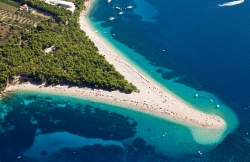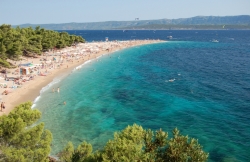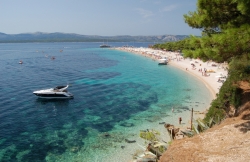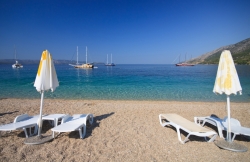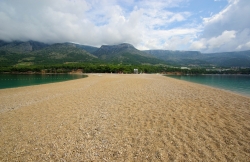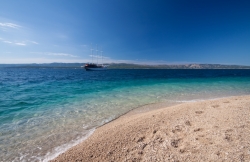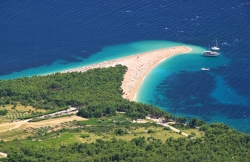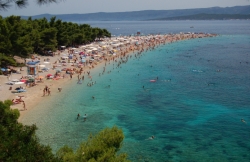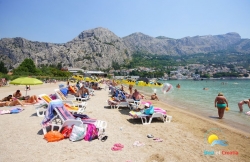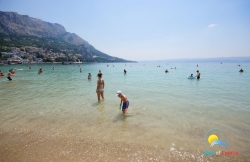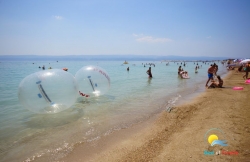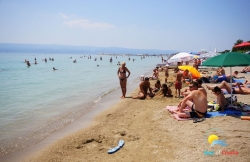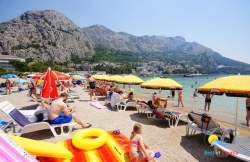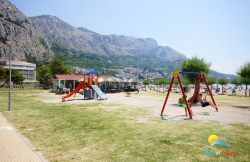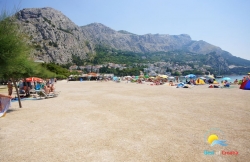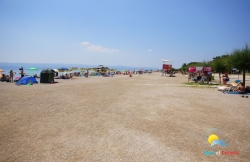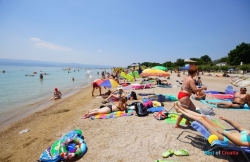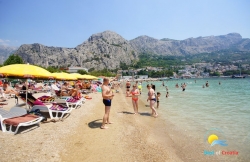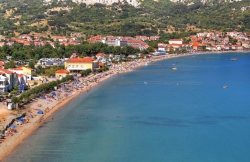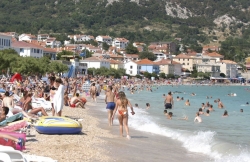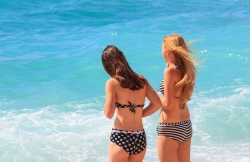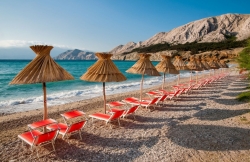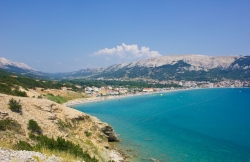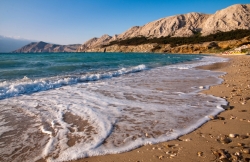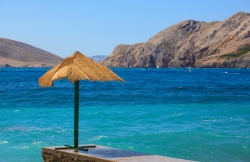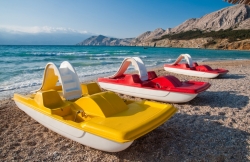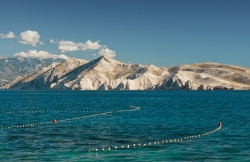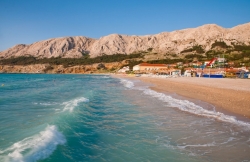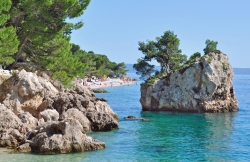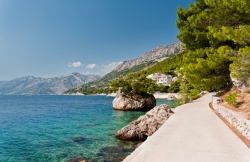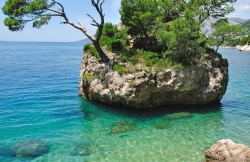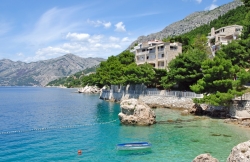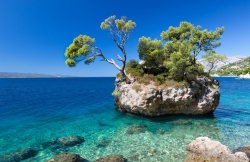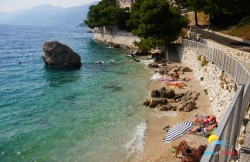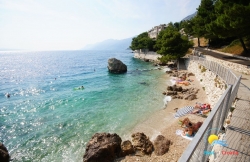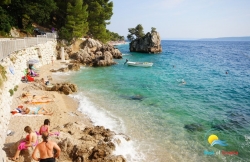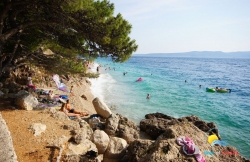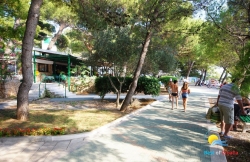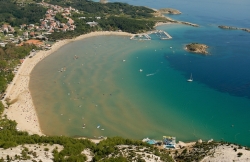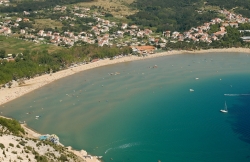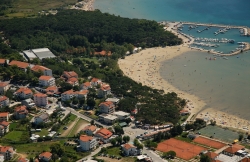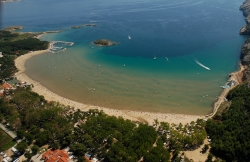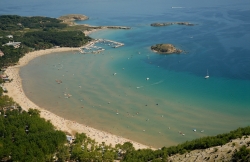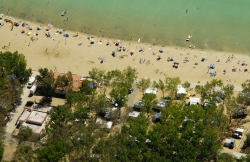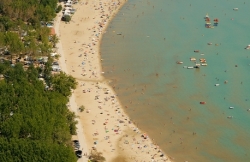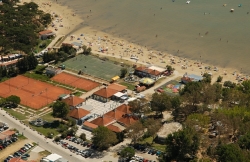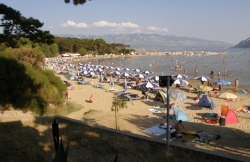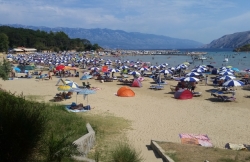
Blue flag beaches
Hidden coves and wide beaches, swimming platforms and crystal clear water, which alluringly glitters in the sun - Croatia is a dream destination for beach lovers, water rats and sun worshipers. Starting in May, when one has not yet thought about their beach holiday, the Croatian coast starts to beckon you to enjoy relaxing days listening to the sounds of the waves. The numerous and, depending on the region, very varied beaches and bays are not only enchantingly beautiful, but they also withstand the comparison to other beautiful beaches in the world. For example, the annually hoisted up Blue Flag attests to the best beaches and to the best water quality. But what's it all really about and what does this label have to say?
Blue flags- what do they mean?
The Blue Flag is, in general, an Eco-label, which is awarded to and renewed every year for beaches and marinas that meet the sometimes very strict criteria of the Foundation for Environmental Education (FEE). The non-profit NGO is internationally represented by national organizations and awards this coveted label to the beaches and marinas that voluntarily undergo a comprehensive test. The focus is mainly on criteria such as water quality, environmental management and education, safety and service quality. The Blue Flag label is only awarded for a season. Moreover, additional verification visits are made to ensure that the certification criteria are still being met after the blue flag has been awarded.
Currently, all beaches that want to be decorated with the coveted Blue Flag must meet a total of 33 criteria. Regarding water quality there are some regulations that apply, for example, that regular water samples are taken and analyzed and that the beaches should be free from effluents, waste, pathogens and chemical stresses. Blue Flag beaches generally have good environmental and waste management, are cleaned regularly, have regulated beach access (e.g. for dogs or in areas with a sensitive ecological balance) and offer services and facilities such as toilets and wash rooms, lifeguards, paramedics and a supply of drinking water. Beaches which are awarded with a Blue Flag, do not include the natural beaches. Instead those that are managed and, as a general rule, provide everything a vacationist's heart desires- from the sun deck to snacks- are those which are awarded the Blue Flag.
Award-Winning Beaches in Croatia
More than 4,000 beaches in 48 countries carry the Eco-label that displays a blue wave on a white background - and almost 100 of them are found in Croatia. During the 2014 season, a total of 97 beach sections in Croatia received the Blue Flag. Most of the excellent beaches can be found in the region of Istria: here you will find a whole 44 holiday destinations for carefree vacation days under the southern sun. These excellent paradises where you can splash around in the clean waters are located around major tourist centers such as Porec, Rovinj, Umag and Vrsar, in particular. At least 27 beaches displaying the Blue Flag can be found in the region of Kvarner – and most of them are, by far, on the holiday island of Krk. Also alluring are the beaches at popular destinations like Cres and Losinj, Rijeka and Opatija (for years now by the way) that all have crystal clear waters and clean, well-kept beaches which leave no desires unfulfilled. Dalmatia has also not been stingy with its natural stimuli and good beaches which make every vacationist's heart beat faster. Most beach sections with the Blue Flag are to be found around Split and Zadar, but also on the offshore islands, such as Hvar and Pag. Incidentally, even the Zagreb region has scored points with its excellent beaches - although the Croatian capital does lie quite obviously inland. All five of these Blue Flag beaches can be found on the lakes around the largest city in the country. Generally speaking: A number of Blue Flag beaches in Croatia belong to holiday parks and campsites, but are accessible as a rule.
closeFind your favorite beach on the map Total found: 113











- 1-5
- out of 113

Why Best of Croatia ?
- Best Price Guaranteed
- No booking fees
- Thousands of satisfied customers
- Numerous objects with direct-booking option
- Intelligent search function with numerous useful filter options
- Extensive travel guide with lots of pictures and videos over 500 pages
- Detailed beach guide with more than 700 beaches







 Best of Croatia
Best of Croatia









